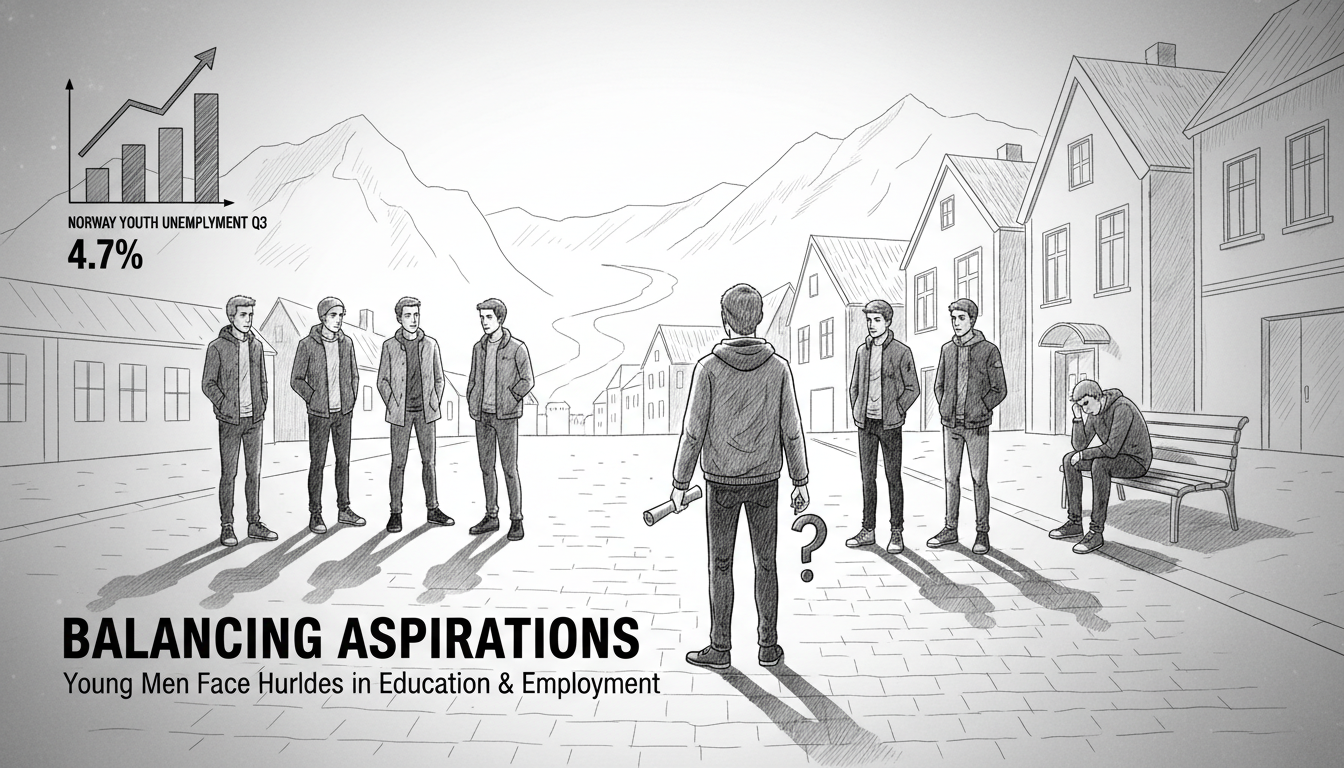Norway faces growing unemployment challenges among young workers. New data reveals a notable increase in joblessness for people aged 15 to 25. The national labor force survey shows unemployment reached 4.7 percent in the third quarter. This marks a rise from 4.0 percent recorded in the first quarter.
Statistics Norway reports approximately 142,000 people were unemployed during this period. The numbers reveal a particular struggle for younger demographics. Unemployment rates for those between 15 and 24 years increased by 0.8 percentage points. Employment rates within this group simultaneously dropped by 1.3 percentage points.
Labor market experts note this trend affects young men most significantly. Employment levels have decreased while unemployment has grown within this demographic. A section chief at Statistics Norway explained the concerning pattern. She said young people often balance education with work aspirations. Many students now express stronger desires to work while studying.
About 35,000 young workers in this age group currently work part-time but want more hours. The statistics reveal substantial movement between employment statuses. Some 43,000 people transitioned from employment to unemployment between the second and third quarters. This represents the largest such shift since the third quarter of 2020 during the pandemic's peak.
Norwegian youth unemployment trends reflect broader economic pressures. Young workers typically face higher vulnerability during economic transitions. They often work in sectors more sensitive to economic fluctuations. The Norwegian welfare system provides strong safety nets, but young people still experience employment challenges.
International readers should understand Norway's unique labor market context. The country maintains relatively low unemployment compared to global standards. Even this increase to 4.7 percent remains below many European nations. Norway's active labor market policies traditionally focus on rapid reintegration. The current youth unemployment situation tests these established systems.
What does this mean for Norway's economy? Younger workers struggling to find stable employment may delay important life milestones. This could affect housing markets, consumer spending, and long-term economic planning. The data suggests Norway's strong economy faces some headwinds. The movement between employment states indicates both churn and opportunity in the job market.
The situation requires monitoring in coming quarters. Norwegian authorities typically respond to such trends with targeted employment programs. Young job seekers may need additional support to navigate the changing labor landscape.
